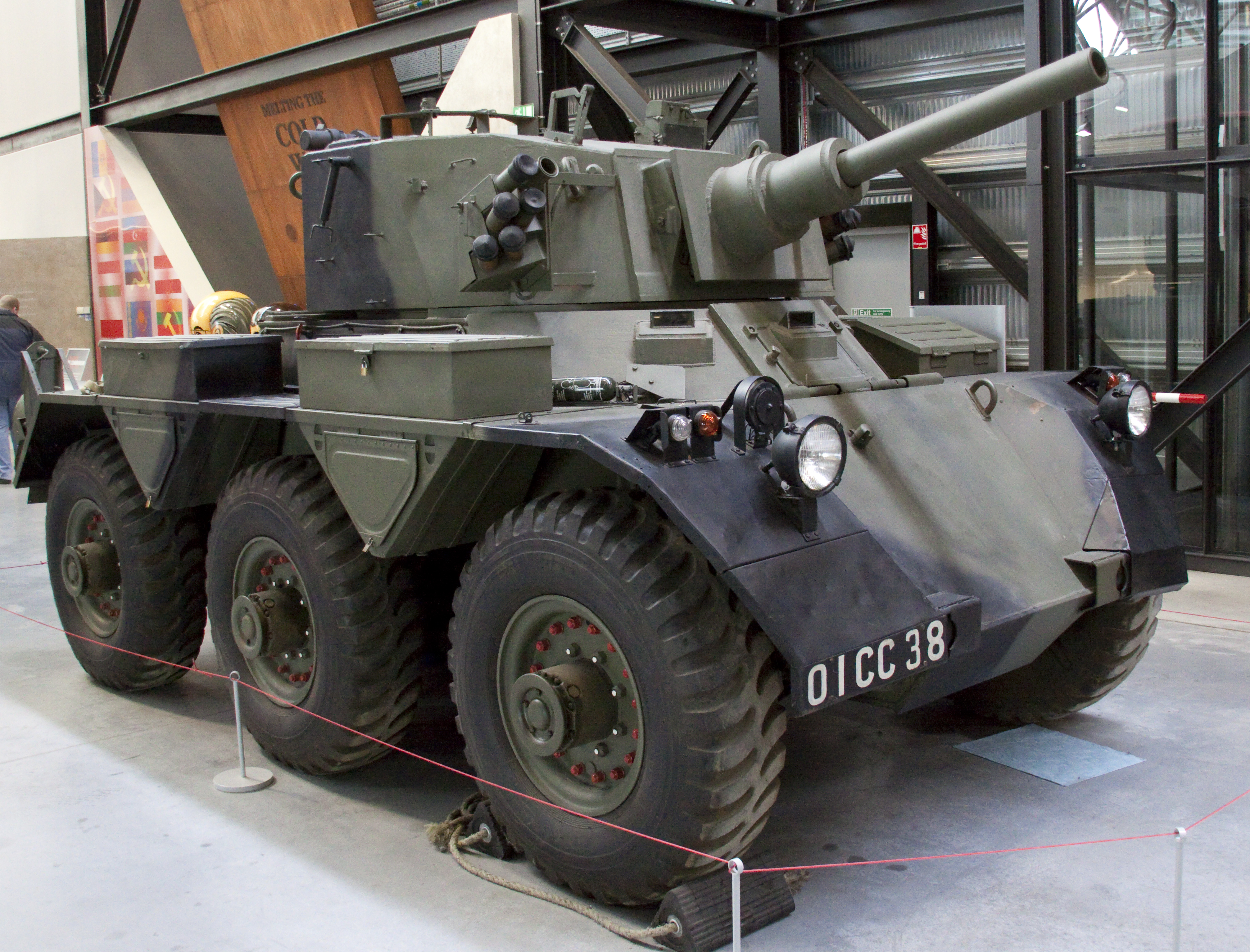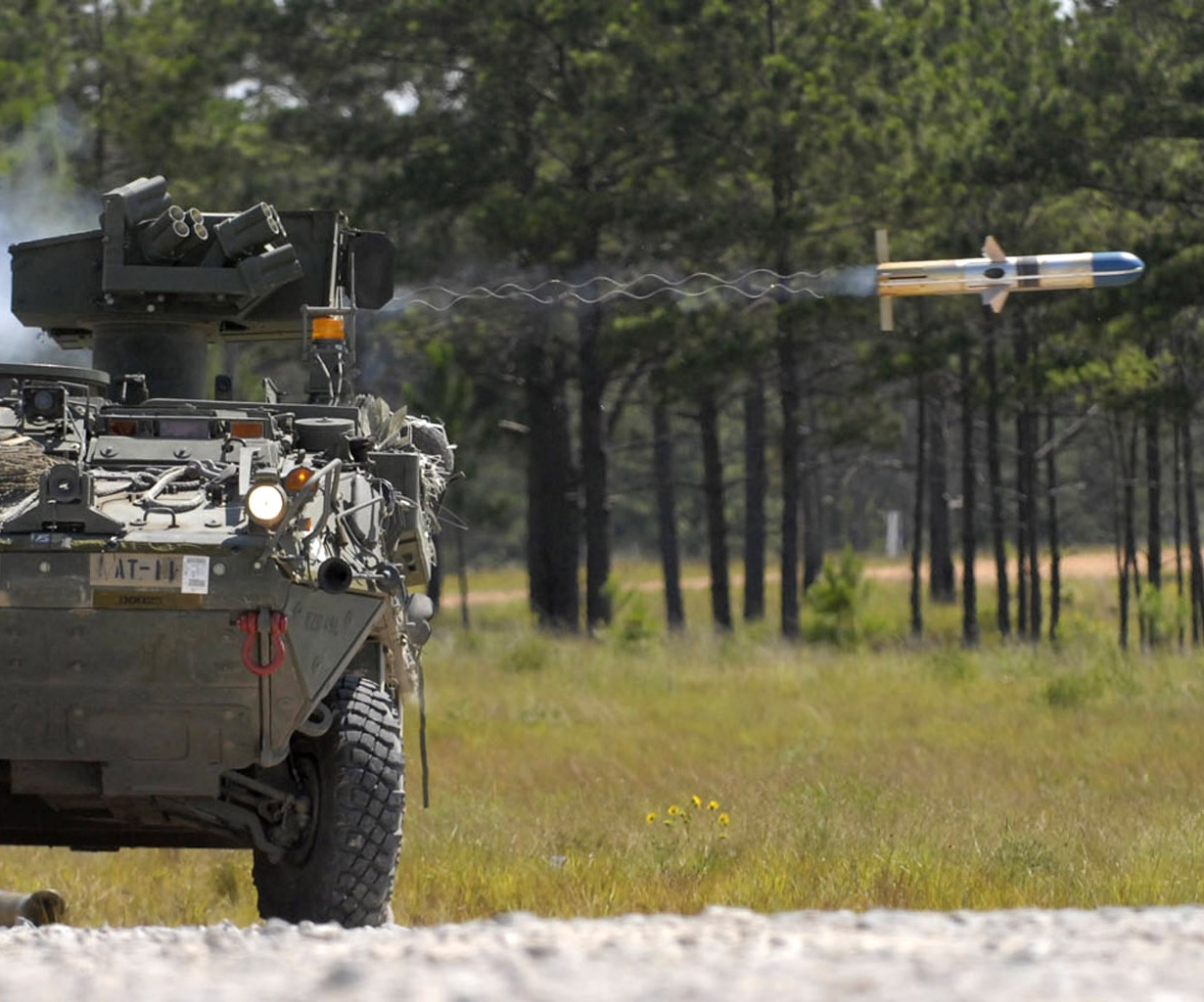|
Raketenjagdpanzer 1
The Raketenjagdpanzer 1 is an anti-tank guided missile-armed tank destroyer (the first such vehicle in service with the West German Armed Forces) that entered service in 1961. It was built on the chassis of the Hispano-Suiza HS.30, which was also used on the Schützenpanzer SPz 12-3, and armed with twin French SS.11 antitank guided missile launchers. Only one of the missile launchers is visible from the outside at any time, however, as the other is retracted into the hull to be reloaded when the first is ready to fire. Armament The twin mounted launchers for the SS.11 anti-tank guided weapons were the primary armament for the Raketenjagdpanzer 1. With ten missiles per vehicle, the crew had the theoretical ability to destroy ten enemy vehicles, although this was doubtful in practice. The weapon was wire-guided and the gunner continued to control the missile via a small periscope A periscope is an instrument for observation over, around or through an object, obstacle or con ... [...More Info...] [...Related Items...] OR: [Wikipedia] [Google] [Baidu] |
West Germany
West Germany is the colloquial term used to indicate the Federal Republic of Germany (FRG; german: Bundesrepublik Deutschland , BRD) between its formation on 23 May 1949 and the German reunification through the accession of East Germany on 3 October 1990. During the Cold War, the western portion of Germany and the associated territory of West Berlin were parts of the Western Bloc. West Germany was formed as a political entity during the Allied occupation of Germany after World War II, established from eleven states formed in the three Allied zones of occupation held by the United States, the United Kingdom, and France. The FRG's provisional capital was the city of Bonn, and the Cold War era country is retrospectively designated as the Bonn Republic. At the onset of the Cold War, Europe was divided between the Western and Eastern blocs. Germany was divided into the two countries. Initially, West Germany claimed an exclusive mandate for all of Germany, representing itself ... [...More Info...] [...Related Items...] OR: [Wikipedia] [Google] [Baidu] |
Tank Destroyer
A tank destroyer, tank hunter, tank killer, or self-propelled anti-tank gun is a type of armoured fighting vehicle, armed with a direct fire artillery gun or missile launcher, designed specifically to engage and destroy enemy tanks, often with limited operational capacities. While tanks are designed for front-line combat, combining operational mobility and tactical offensive and defensive capabilities and performing all primary tasks of the armoured troops, the tank destroyer is specifically designed to take on enemy tanks and other armoured fighting vehicles. Many are based on a tracked tank chassis, while others are wheeled. Since World War II, gun-armed powerful tank destroyers have fallen out of favor as armies have favored multirole main battle tanks. However, lightly armoured anti-tank guided missile (ATGM) carriers are commonly used for supplementary long-range anti-tank work. The resurgence of expeditionary warfare in the first two decades of the 21st century ha ... [...More Info...] [...Related Items...] OR: [Wikipedia] [Google] [Baidu] |
Trailing Link Suspension
A (semi) trailing-arm suspension, sometimes referred to as (semi) trailing-link is a vehicle axle or wheel suspension design in which one or more horizontal arms (or "links"), perpendicular to and forward of the axle, are connecting the axle or wheels with pivot joint(s) ahead of them, on the structure (unibody or chassis) of a motor vehicle. These are typically used on the rear axle or wheels of a vehicle, but also found in aircraft landing gear. Leading arms are similar horizontal arms, perpendicular to the axle, but connecting the wheels to the vehicle structure via pivot joints ''to the rear'' of them. These are typically used on the front axle or wheels, as on the Citroën 2CV and its derivatives, and on the Citroën DS, as well as on the M422 Mighty Mite jeep. Types Trailing-arm Trailing-arm designs in live axle setups often use just two or three links and a Panhard rod to locate the wheel laterally. A trailing arm design can also be used in an independent suspension ... [...More Info...] [...Related Items...] OR: [Wikipedia] [Google] [Baidu] |
Rolls-Royce B81
The Rolls-Royce B range was a range of petrol engines first intended to be installed in a car but in 1943 developed into a range to power the British Army's wheeled vehicles.Rolls-Royce Motors Holdings Limited. ''The Times'', Monday, May 07, 1973; pg. 23; Issue 58775 The Alvis Saladin and Rolls-Royce Phantom IV were fitted with 8-cylinder versions. Overview Common features The B range of engines were all of the inline configuration, with crossflow inlet-over-exhaust cylinder heads and were naturally aspirated. They were heavily rationalized engines, which made use of as many common parts across the range as possible, for example, the 8 cylinder versions used 2 sets of the oil bath air filters, exhaust manifolds and points components of the 4 cylinder, while using the same carburettor as the 6. Pistons, rods, valves, springs, liners, etc. were common across the range, until the introduction of the overbored xx1 series, which still attempted to use as many common componen ... [...More Info...] [...Related Items...] OR: [Wikipedia] [Google] [Baidu] |
Anti-tank Guided Missile
An anti-tank guided missile (ATGM), anti-tank missile, anti-tank guided weapon (ATGW) or anti-armor guided weapon is a guided missile primarily designed to hit and destroy heavily armored military vehicles. ATGMs range in size from shoulder-launched weapons, which can be transported by a single soldier, to larger tripod-mounted weapons, which require a squad or team to transport and fire, to vehicle and aircraft mounted missile systems. Earlier man-portable anti-tank weapons like anti-tank rifles and magnetic anti-tank mines, generally had very short range, sometimes on the order of metres or tens of metres. Rocket-propelled high-explosive anti-tank (HEAT) systems appeared in World War II and extended range to the order of hundreds of metres, but accuracy was low and hitting targets at these ranges was largely a matter of luck. It was the combination of rocket propulsion and remote wire guidance that made the ATGM much more effective than these earlier weapons, and gave ... [...More Info...] [...Related Items...] OR: [Wikipedia] [Google] [Baidu] |
Tank Destroyer
A tank destroyer, tank hunter, tank killer, or self-propelled anti-tank gun is a type of armoured fighting vehicle, armed with a direct fire artillery gun or missile launcher, designed specifically to engage and destroy enemy tanks, often with limited operational capacities. While tanks are designed for front-line combat, combining operational mobility and tactical offensive and defensive capabilities and performing all primary tasks of the armoured troops, the tank destroyer is specifically designed to take on enemy tanks and other armoured fighting vehicles. Many are based on a tracked tank chassis, while others are wheeled. Since World War II, gun-armed powerful tank destroyers have fallen out of favor as armies have favored multirole main battle tanks. However, lightly armoured anti-tank guided missile (ATGM) carriers are commonly used for supplementary long-range anti-tank work. The resurgence of expeditionary warfare in the first two decades of the 21st century ha ... [...More Info...] [...Related Items...] OR: [Wikipedia] [Google] [Baidu] |
Bundeswehr
The ''Bundeswehr'' (, meaning literally: ''Federal Defence'') is the armed forces of the Federal Republic of Germany. The ''Bundeswehr'' is divided into a military part (armed forces or ''Streitkräfte'') and a civil part, the military part consisting of the German Army, the German Navy, the German Air Force, the Joint Support Service, the Joint Medical Service, and the Cyber and Information Domain Service. , the ''Bundeswehr'' had a strength of 183,638 active-duty military personnel and 81,318 civilians, placing it among the 30 largest military forces in the world, and making it the second largest in the European Union behind France. In addition, the ''Bundeswehr'' has approximately 30,050 reserve personnel (2020). With German military expenditures at $56.0 billion, the ''Bundeswehr'' is the seventh highest-funded military in the world, though military expenditures remain relatively average at 1.3% of national GDP, well below the (non-binding) NATO target of 2%. Germa ... [...More Info...] [...Related Items...] OR: [Wikipedia] [Google] [Baidu] |
Hispano-Suiza
Hispano-Suiza () is a Spanish automotive–engineering company. It was founded in 1904 by Marc Birkigt and Damian Mateu as an automobile manufacturer and eventually had several factories in Spain and France that produced luxury cars, aircraft engines, trucks and weapons. In 1923, its French luxury car arm became a semi-autonomous partnership with the Spanish parent company. In 1946, the Spanish parent company sold all of its Spanish automotive assets to Enasa, a Spanish state-owned vehicle manufacturer, and the French arm continued as an independent aviation engine and components manufacturer under the Hispano-Suiza name. In 1968, Hispano-Suiza was taken over by the aerospace company Snecma, which is now part of the French Safran Group. An attempt to relaunch the marque was made by the company Hispano Suiza Cars associated with the Peralada Group (owned by the Suqué Mateu family) in 2019 with a fully-electric car. History Early years In 1898, a Spanish artillery captain, Emi ... [...More Info...] [...Related Items...] OR: [Wikipedia] [Google] [Baidu] |
Missile
In military terminology, a missile is a missile guidance, guided airborne ranged weapon capable of self-propelled flight usually by a jet engine or rocket motor. Missiles are thus also called guided missiles or guided rockets (when a previously unguided rocket is made guided). Missiles have five system components: targeting (warfare), targeting, guidance system, flight system, engine and warhead. Missiles come in types adapted for different purposes: surface-to-surface missile, surface-to-surface and air-to-surface missiles (ballistic missile, ballistic, cruise missile, cruise, anti-ship missile, anti-ship, anti-submarine missile, anti-submarine, anti-tank missile, anti-tank, etc.), surface-to-air missiles (and anti-ballistic missile, anti-ballistic), air-to-air missiles, and anti-satellite weapons. Airborne explosive devices without propulsion are referred to as shell (projectile), shells if fired by an artillery piece and bombs if dropped by an aircraft. Unguided jet- or rocke ... [...More Info...] [...Related Items...] OR: [Wikipedia] [Google] [Baidu] |
Wire-guided
A wire-guided missile is a missile that is guided by signals sent to it via thin wires connected between the missile and its guidance mechanism, which is located somewhere near the launch site. As the missile flies, the wires are reeled out behind it (command guidance). This guidance system is most commonly used in anti-tank missiles, where its ability to be used in areas of limited line-of-sight make it useful, while the range limit imposed by the length of the wire is not a serious concern. The longest range wire-guided missiles in current use are limited to about . History Electrical wire guidance dates back to the early 20th century with an early example being the Lay Torpedo. A prototype ground-based electrical wire-guided torpedo was built by the Germans during World War II. The pair of deployed German guided air-delivered ordnance designs, the Fritz X and Henschel Hs 293, both used the ''Kehl-Straßburg'' radio guidance system for control. However, because the Briti ... [...More Info...] [...Related Items...] OR: [Wikipedia] [Google] [Baidu] |
Periscope
A periscope is an instrument for observation over, around or through an object, obstacle or condition that prevents direct line-of-sight observation from an observer's current position. In its simplest form, it consists of an outer case with mirrors at each end set parallel to each other at a 45° angle. This form of periscope, with the addition of two simple lenses, served for observation purposes in the trenches during World War I. Military personnel also use periscopes in some gun turrets and in armoured vehicles. More complex periscopes using prisms or advanced fiber optics instead of mirrors and providing magnification operate on submarines and in various fields of science. The overall design of the classical submarine periscope is very simple: two telescopes pointed into each other. If the two telescopes have different individual magnification, the difference between them causes an overall magnification or reduction. Early examples Johannes Hevelius described an earl ... [...More Info...] [...Related Items...] OR: [Wikipedia] [Google] [Baidu] |







